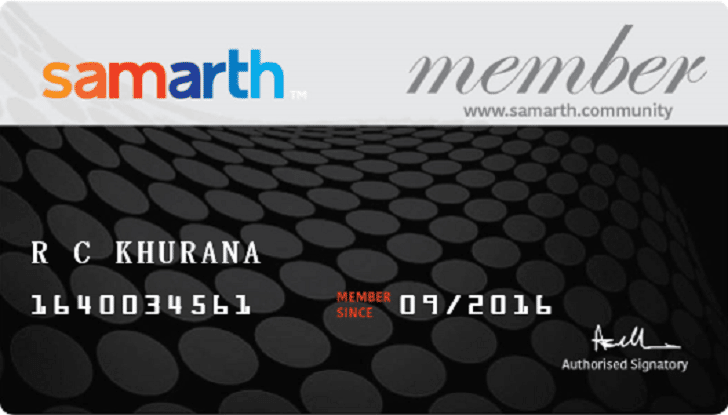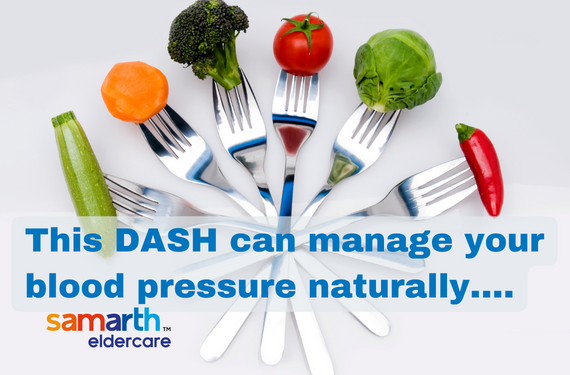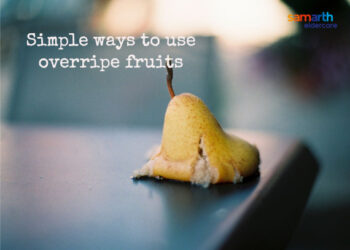According to a survey conducted by Samarth Community in 2022, over 55% of respondents suffered from hypertension. About 47% have tried various diet and lifestyle remedies in addition to medication to manage it.
You must have heard of common tips to manage high blood-pressure: exercising regularly, avoiding stress, controlling intake of salt and the like. However, most advice ends up being very general without specific to-dos. This is where DASH, an eating plan developed by the National Institutes for Health in the USA, offers a practical, useful, and sustainable way for everyone to manage hypertension without requiring any special foods. It provides daily and weekly goals which can be easily followed by all seniors.
Multiple studies have found that the DASH eating plan helps reduce blood pressure and LDL cholesterol, two risk factors for heart disease.

Join Now >
What is DASH?
DASH stands for Dietary Approaches to Stop Hypertension. The DASH diet includes foods that are rich in potassium, calcium and magnesium, the nutrients which help control blood pressure. This diet limits foods that are high in sodium, saturated fat and added sugars. It also restricts sodium intake to 2,300 mg a day, which is approximately the amount of sodium found in 1 teaspoon of salt.
A simple meal plan
The Mayo Clinic, ranked as America’s best hospital since 2016 by U.S. News, has outlined a sample DASH meal plan. This includes:
- 6-8 servings of grains daily
1 serving is 1 slice of bread, or 30 grams dry cereal or 1/2 cup cooked cereal, rice, or pasta. - 4-5 servings of vegetables daily
1 serving is 1 cup raw leafy green vegetables, or 1/2 cup cut-up raw or cooked vegetables, or 1/2 cup vegetable juice. - 4-5 servings of fruits daily
1 serving is 1 medium fruit, or 1/2 cup fresh, or frozen or canned fruit, or 1/2 cup fruit juice. - 2-3 servings of fat-free or low-fat dairy products daily
1 serving is 1 cup milk or yogurt, or about 40 grams cheese. - Fewer than 6 servings of lean meats/poultry/fish/ vegetarian proteins daily
1 serving is 30 grams cooked meat, poultry, fish, or vegetarian protein, or 1 egg. - 2-3 servings of fats and oils daily
1 serving is 1 teaspoon vegetable oil, or 2 tablespoons salad dressing. - 4-5 servings of nuts, seeds, and dal weekly
1 serving is 1/3 cup nuts, or 2 tablespoons seeds, or 1/2 cup cooked dal. - Fewer than 5 servings of sweets and added sugars weekly
1 serving is 1 tablespoon sugar or jam, or a rasgulla or small piece of mithai.
Other health benefits of DASH
Not only does DASH lower blood pressure naturally, but it also reduces risk of heart disease and helps prevent kidney stones. It can also help with weight loss and reduce cancer risk. Further, DASH has been linked to a lower risk of type 2 diabetes. Some studies demonstrate that it can improve insulin resistance as well. Many of these protective effects are attributed to the diet’s high fruit and vegetable content and low sodium content.
5 things to help transition to a DASH meal plan
Because there are no set foods on the DASH diet, it is easy to adapt one’s current diet to the DASH guidelines by doing the following:
- Swap refined grains for whole grains.
- Using sodium-free spices or flavourings instead of salt,
- Not adding salt when cooking rice, pasta, or hot cereal.
- Limiting intake of foods high in saturated fats like fatty meats, full-fat dairy and oils like coconut and palm oil.
- Sticking to low-calorie drinks like water, tea, and coffee.











